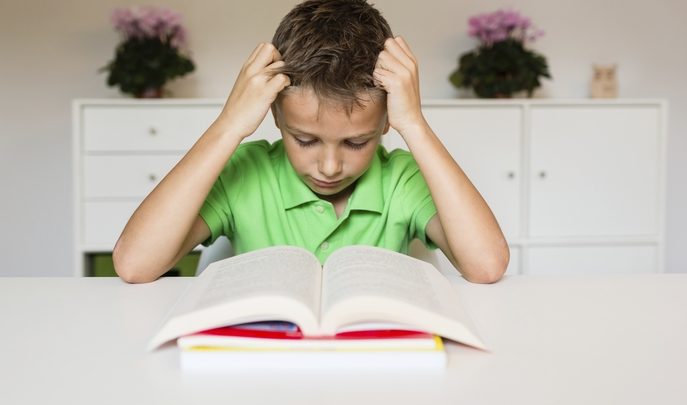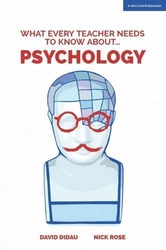“If a student leaves secondary school unable to read it is the school’s fault”

Schools would do well to remember that reading is a skill that can be taught to (almost) anyone, given enough time and patience, says David Didau…

- by David Didau
- Writer, speaker & senior lead practitioner for English at OAT Visit website

If a student leaves secondary school unable to read it is the school’s fault.
I’ll leave that opening sentence hanging, parked like a tank on your lawn, while we consider what’s involved in teaching students to read.
Reading involves two linked abilities: language comprehension and decoding. Decoding is the ability to turn squiggles on a page (graphemes) into sounds (phonemes). Before we can decode we live surrounded by meaningless symbols. Learning to read transforms us; we can’t switch it off.
Our new ability is irreversible and draws a deep division between versions of ourselves. We struggle to understand what it might be like not to be able to do something everyone around us finds so effortless. Surely anyone unable to do something so simple must be cognitively impaired?
This is the standard view of reading difficulties – that if you struggle to read you must be a bit thick. Although we know that’s not entirely true, and have come to accept there are those we call dyslexic who walk amongst us, for those of us who can read, non-readers are an alien species.
But there is no correlation between intelligence and the ability to decode text.
Read that again. Startling, isn’t it? Remember, decoding is just one part of the complex process of reading. Unlike decoding, language comprehension is closely linked to intelligence. Decoding, though, is a mechanical process which can be automated, just as we automate the skill of driving a car.
Now, while there might be a very small number of outlier students who have some sort of biological inability to learn to read, almost everyone can be taught to do it. Further, no matter how quickly some students pick up reading, everybody needs to be taught how to do it.
Sometimes we make the mistake of believing that since we can just ‘pick up’ speech, we can also acquire reading simply from being exposed to texts. But consider, while we’ve been speaking for millennia, written language is a very recent invention. It’s only in the last few hundred years that reading has become the norm.
Missed opportunities
Nationally, around 20% of students leave primary school unable fluently and accurately to decode. This means that their reading speed is likely to be less than 200 words per minute. When reading speed is this slow, our ability to comprehend text starts to disintegrate. So much attention is required to keep track of the grapheme/phoneme relationships that there’s little working memory capacity for thinking about meaning.
Crucially, if reading is hard work you’re unlikely to do it for pleasure, and without practice, students who struggle to decode fall even further behind their reading peers. It’s estimated that the top 10% of readers read in two days what it takes the bottom 10% a whole year to absorb.
How does this happen? One explanation lies in the fact that the NHS estimates that eight out of every ten children between the ages of four and ten suffer from undiagnosed glue ear. This means that although they can hear well enough to recognise they are being spoken to and respond appropriately, they may be unable to pick up the fine distinctions between different vowel and consonant sounds.
When everyone else in the class is receiving phonics instruction, children with glue ear may not be able to hear what’s going on. Because this condition tends to clear up by itself, these pupils run the risk of being written off as academically weak.
Children who haven’t learned to decode in Key Stage 1 are much less likely to get the instruction they need in Key Stage 2. And if they haven’t cracked it by the time they leave primary – well, they’re stuffed!
Because the screening tests used by most secondary schools don’t monitor the speed at which students read, we often fail to spot fluency issues. All we see is that comprehension for some is weaker than their peers and assume they’re not as clever. And even if we do manage to identify the problem, most children who arrive a secondary school unable to read are on a predictable and all-too-familiar trajectory.
Smarter thinking
The truth is, despite the valiant efforts of SEND departments, the overwhelming majority of youngsters who arrive at secondary school unable to leave will leave unable to read. We wring our hands and bemoan how this is ‘Just one of those things’. It’s sad, but we tried our best and there’s nothing we could have done, we tell ourselves.
Not so – as explained earlier, with sufficient time and patience (almost) anyone can be taught to read.
You may very well feel that there’s not a lot you can do about this sad state of affairs and you would, on the whole, be right. If you’re employed to teach science or D&T, you most likely haven’t the time or the expertise to teach students to read.
But what you can do is recognise that school is a terrible place for students unable to do what everyone else seems to take to utterly for granted. We can at least do those young people the courtesy of recognising that they have a reading problem and not an intelligence problem.
You may not be able to solve this problem yourself, but someone can. I’m certainly not blaming individual teachers but again, and without apology – if a student leaves secondary school unable to fluently and accurately decode text…it is the school’s fault.
 David Didau is based at Swindon Academy as an in-house consultant; he blogs at www.learningspy.co.uk and tweets as @LearningSpy
David Didau is based at Swindon Academy as an in-house consultant; he blogs at www.learningspy.co.uk and tweets as @LearningSpy
His latest book, What Every Teacher Needs to Know About Psychology, is available now, published by John Catt Educational










